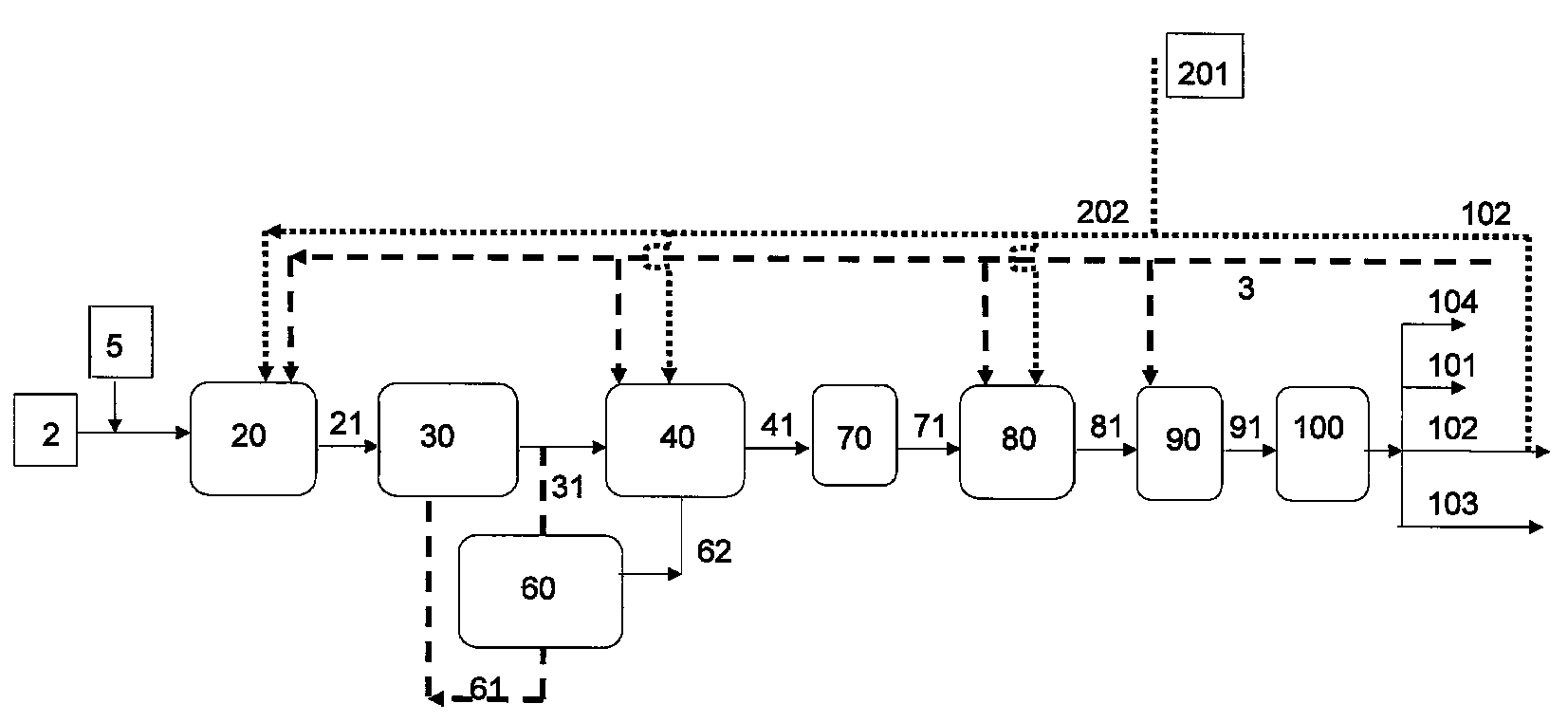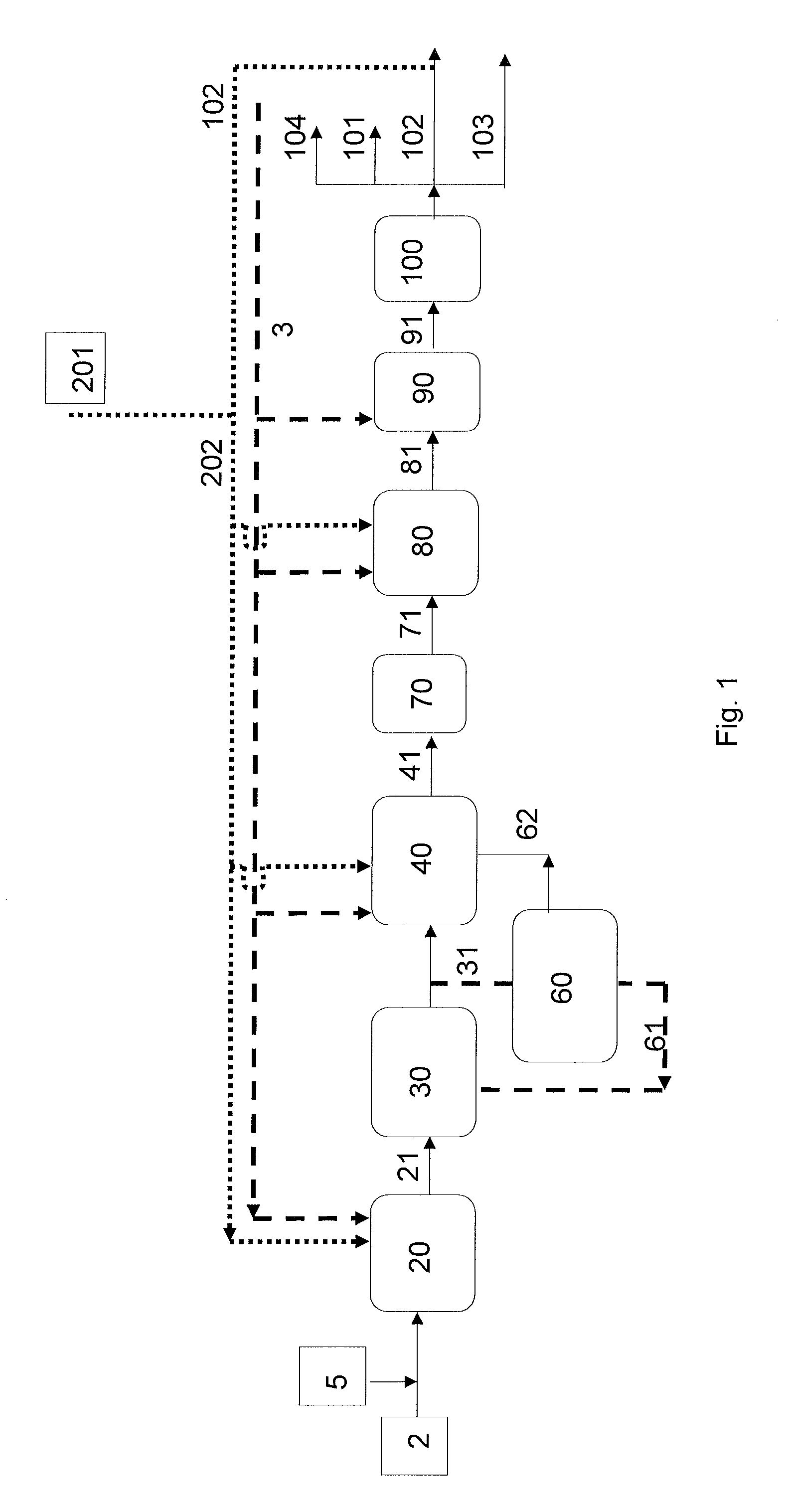Process for producing a branched hydrocarbon base oil from a feedstock containing aldehyde and/or ketone
a hydrocarbon base oil and feedstock technology, applied in the direction of hydrocarbon oil treatment products, carbonyl compound preparations, naphtha treatment, etc., can solve the problems of not being able to produce lubricants that meet the requirements, high volatility and a modest viscosity index, and the response of mineral oils to antioxidant additives is often low, so as to reduce carbon dioxide emissions contributing to the greenhouse effect, the effect of improving low temperature properties and reducing pour points
- Summary
- Abstract
- Description
- Claims
- Application Information
AI Technical Summary
Benefits of technology
Problems solved by technology
Method used
Image
Examples
example 1
Preparation of a Hydrocarbon Component from C16 Aldehyde
[0123]In aldol condensation reaction 200 g of C16 fatty aldehyde derived from palm oil and 100 g of 20% NaOH dissolved in water were put in a Parr reactor. Mixing was adjusted to 250 rpm, temperature to 250° C. and pressure to 0.5 MPa. Slight nitrogen purge was maintained to sweep out water liberated in reaction. Reaction was carried out until the amount of condensed aldehyde was stabilised in GC analysis. After the reaction the product was neutralized with hydrochloric acid, washed with water and dried with calcium chloride.
[0124]In the next HDO step, the condensed aldehyde obtained above was hydrogenated in a high pressure Parr reactor using a dried and activated NiMo / Al2O3 catalyst, to give a methyl branched paraffin. The aldehyde was hydrogenated at 340° C., under a pressure of 5 MPa, mixing at 300 rpm until no aldehyde peak was detected in the FTIR spectrum. The pour point of the obtained methyl branched C32 paraffin wax w...
example 2
Preparation of a Hydrocarbon Component from C23 Ketone and Furfural
[0125]In the aldol condensation step 14.6 g laurone (C23 ketone derived from palm kernel oil), 150 ml isopropanol and 15 ml of 10% NaOH in water was mixed and refluxed 20 min in a round bottom flask at 80° C. 15 g of furfural (aldehyde derived from aldohexose sugar) was added and heating under reflux was continued for 5 hours. After cooling, alcohol was evaporated in a rotary evaporator. Reaction was repeated and residues from two syntheses were dissolved in ethyl acetate, cooled in ice and the unreacted laurone was filtrated from cold solution.
[0126]In the next HDO step, the condensation product obtained above was hydrogenated in a high pressure Parr reactor using a dried and activated NiMo / Al2O3 catalyst, to give a methyl branched paraffin. The aldehyde was hydrogenated at 320° C., under a pressure of 5 MPa, mixing at 300 rpm for 5 hours. The pour point of the obtained pentyl branched wax was 11° C.
example 3
Preparation of a Hydrocarbon Component from Ketones Derived from Plant Oil
[0127]In the aldol condensation step 10 g of C31 / C33 / C35 ketone mixture derived from palm oil fatty acids and 2 g of NaOH were heated in a round bottom flask to 400° C. for 30 min under mixing. After cooling the synthesis product was dissolved in 50 ml of ethyl acetate, filtrated and the diluent was evaporated.
[0128]In the next HDO step, the condensation product obtained above was hydrogenated as in Example 2. The pour point of branched wax was 35° C.
PUM
| Property | Measurement | Unit |
|---|---|---|
| temperature | aaaaa | aaaaa |
| temperature | aaaaa | aaaaa |
| pressure | aaaaa | aaaaa |
Abstract
Description
Claims
Application Information
 Login to View More
Login to View More - R&D
- Intellectual Property
- Life Sciences
- Materials
- Tech Scout
- Unparalleled Data Quality
- Higher Quality Content
- 60% Fewer Hallucinations
Browse by: Latest US Patents, China's latest patents, Technical Efficacy Thesaurus, Application Domain, Technology Topic, Popular Technical Reports.
© 2025 PatSnap. All rights reserved.Legal|Privacy policy|Modern Slavery Act Transparency Statement|Sitemap|About US| Contact US: help@patsnap.com



